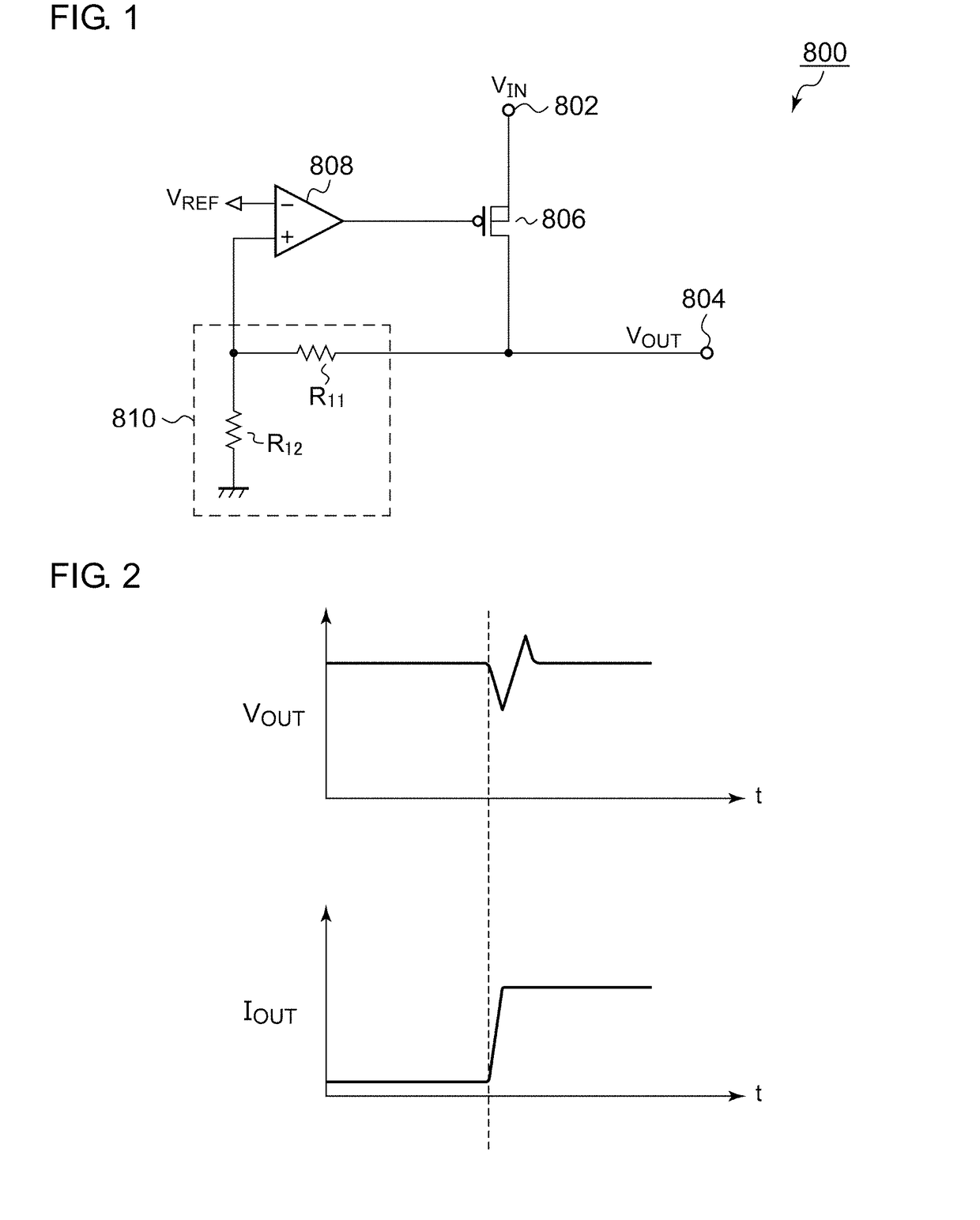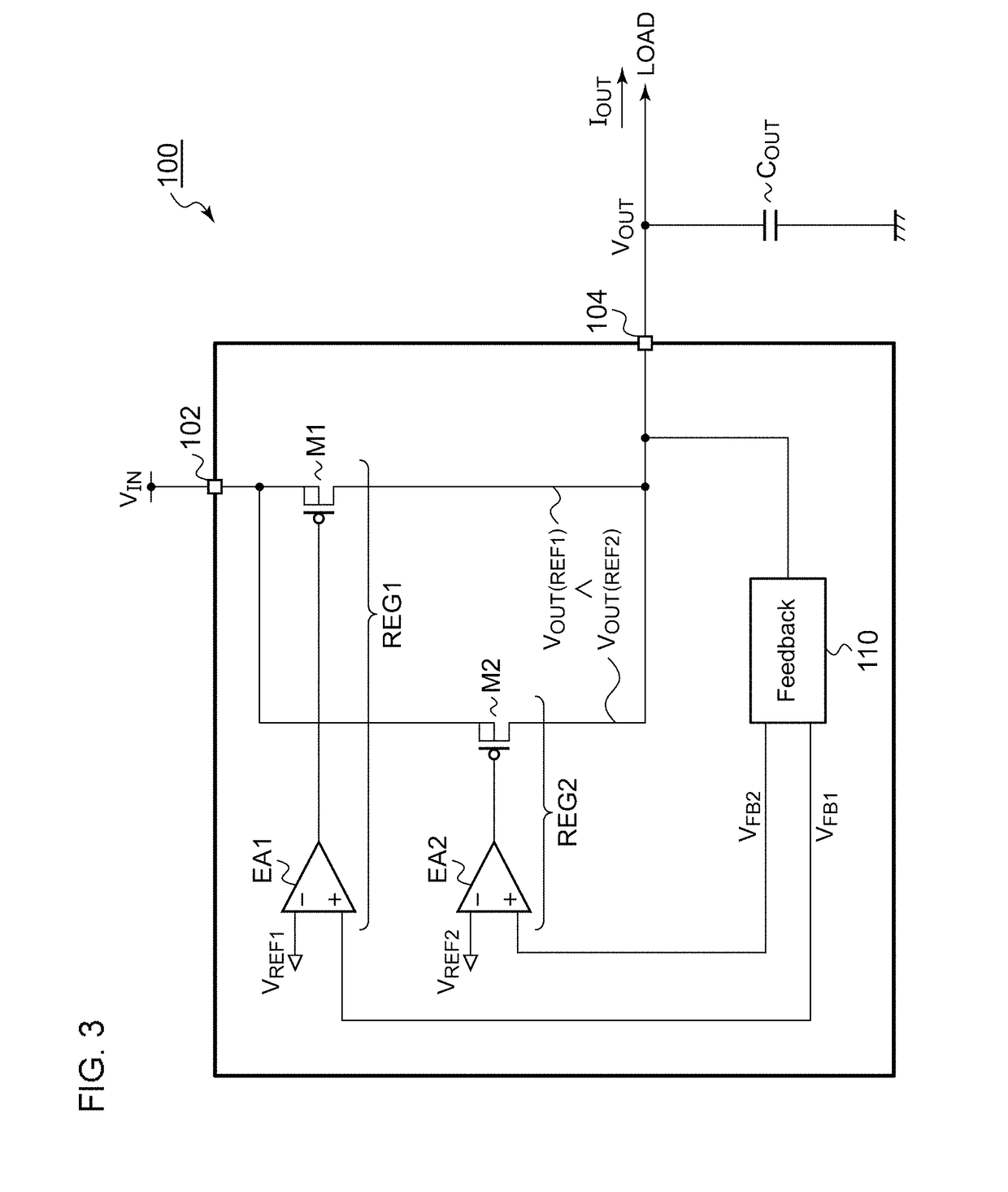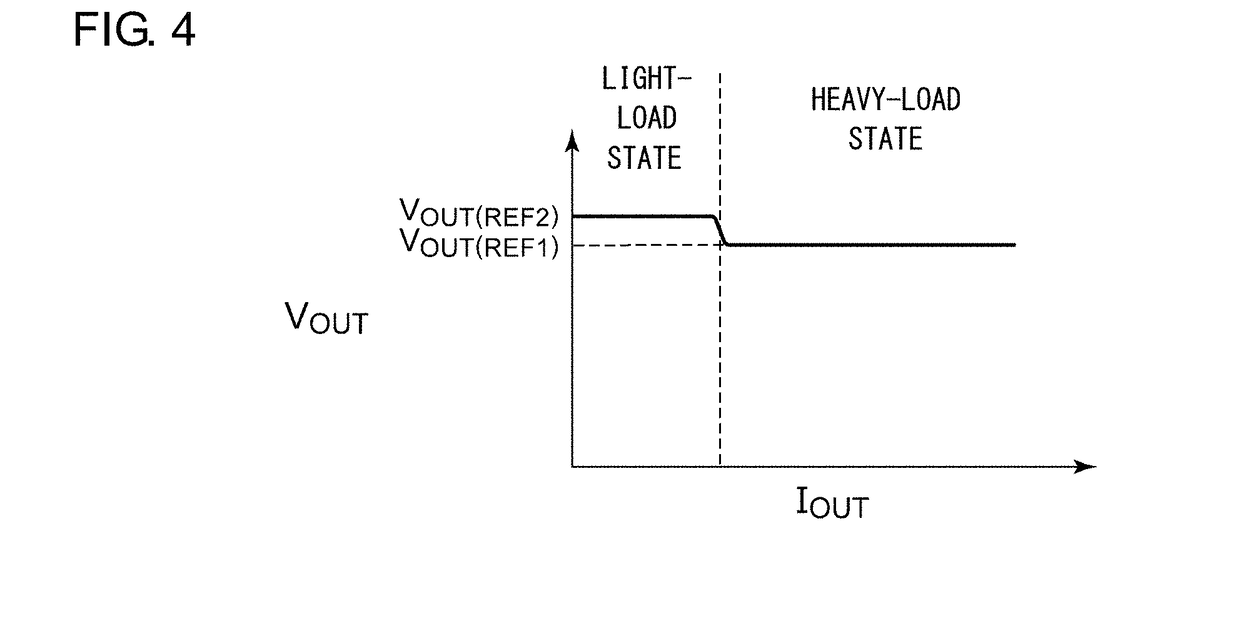Regulator circuit
a regulator circuit and regulator technology, applied in the field of linear regulators, can solve the problems of reducing responsivity, reducing phase margin and gain margin, and difficult to maintain stability over a wide load range, and achieve the effect of reducing current consumption
- Summary
- Abstract
- Description
- Claims
- Application Information
AI Technical Summary
Benefits of technology
Problems solved by technology
Method used
Image
Examples
first embodiment
[0089]FIG. 3 is a circuit diagram showing a regulator circuit 100 according to a first embodiment. The regulator circuit 100 receives an input voltage VIN via its input terminal 102, and supplies an output voltage VOUT stabilized to a given target voltage VOUT(REF) to a load (not shown) coupled to an output terminal 104 thereof. The regulator circuit 100 is also referred to as an LDO (Low Drop Output) circuit. An output capacitor COUT is coupled to the output terminal 104 for smoothing the output voltage VOUT. The components of the regulator circuit 100 may be monolithically integrated on a single semiconductor substrate except for the output capacitor COUT.
[0090]The regulator circuit 100 includes a first transistor M1, a second transistor M2, a first error amplifier EA1, and a second error amplifier EA2. The first transistor M1 and the first error amplifier EA1 form a first linear regulator (heavy-load-supporting regulator) REG1 that is capable of supplying electric power to the lo...
example 1.1
[0107]FIG. 5 is a circuit diagram showing a regulator circuit 100A according to an example. With this example, the relations VFB1=VFB2, and VREF1>VREF2 hold true. A feedback circuit 110A includes resistors R1 and R2. The feedback ratio α1 of the first feedback signal VFB1 is equal to the feedback ratio α2 of the second feedback signal VFB2, which is represented by α=R2 / (R1+R2).
VFB1=VFB2=VOUT×α
[0108]The reference value VREF2 employed by the second error amplifier EA2 is higher than the reference value VREF1 employed by the first error amplifier EA1. A reference voltage source 120 generates a predetermined reference voltage VREF. The reference voltage VREF is supplied without change to the first error amplifier EA1, which is used as the first reference value VREF1. Furthermore, a positive offset voltage ΔV is added to the reference voltage VREF so as to generate the second reference voltage VREF2.
[0109]Alternatively, the reference voltage VREF may be used as the second reference volta...
example 1.2
[0112]FIG. 7 is a circuit diagram showing a regulator circuit 100B according to an example. With the regulator circuit 100B, a designed reference value VOFS is applied to the second error amplifier EA2. By applying such an input offset voltage VOFS2, an effective reference value VREF2 is shifted. From another viewpoint, by applying such an input offset voltage VOFS2, it can be understood that the effective second feedback signal VFB2 is shifted.
[0113]The first error amplifier EA1 adjusts the gate voltage of the first transistor M1 such that the relation VREF=VFB holds true. On the other hand, the second error amplifier EA2 adjusts the gate voltage of the second transistor M2 such that the relation VREF+VOFS2=VFB holds true.
[0114]Accordingly, the following relations hold true.
VOUT(REF1)=VREF×(R1+R2) / R2
VOUT(REF2)=(VREF+VOFS2)×(R1+R2) / R2
[0115]Thus, the following relation holds true.
VOUT(REF2)>VOUT(REF1)
[0116]Instead of or in addition to applying the input offset voltage VOFS2 to th...
PUM
 Login to View More
Login to View More Abstract
Description
Claims
Application Information
 Login to View More
Login to View More - R&D
- Intellectual Property
- Life Sciences
- Materials
- Tech Scout
- Unparalleled Data Quality
- Higher Quality Content
- 60% Fewer Hallucinations
Browse by: Latest US Patents, China's latest patents, Technical Efficacy Thesaurus, Application Domain, Technology Topic, Popular Technical Reports.
© 2025 PatSnap. All rights reserved.Legal|Privacy policy|Modern Slavery Act Transparency Statement|Sitemap|About US| Contact US: help@patsnap.com



